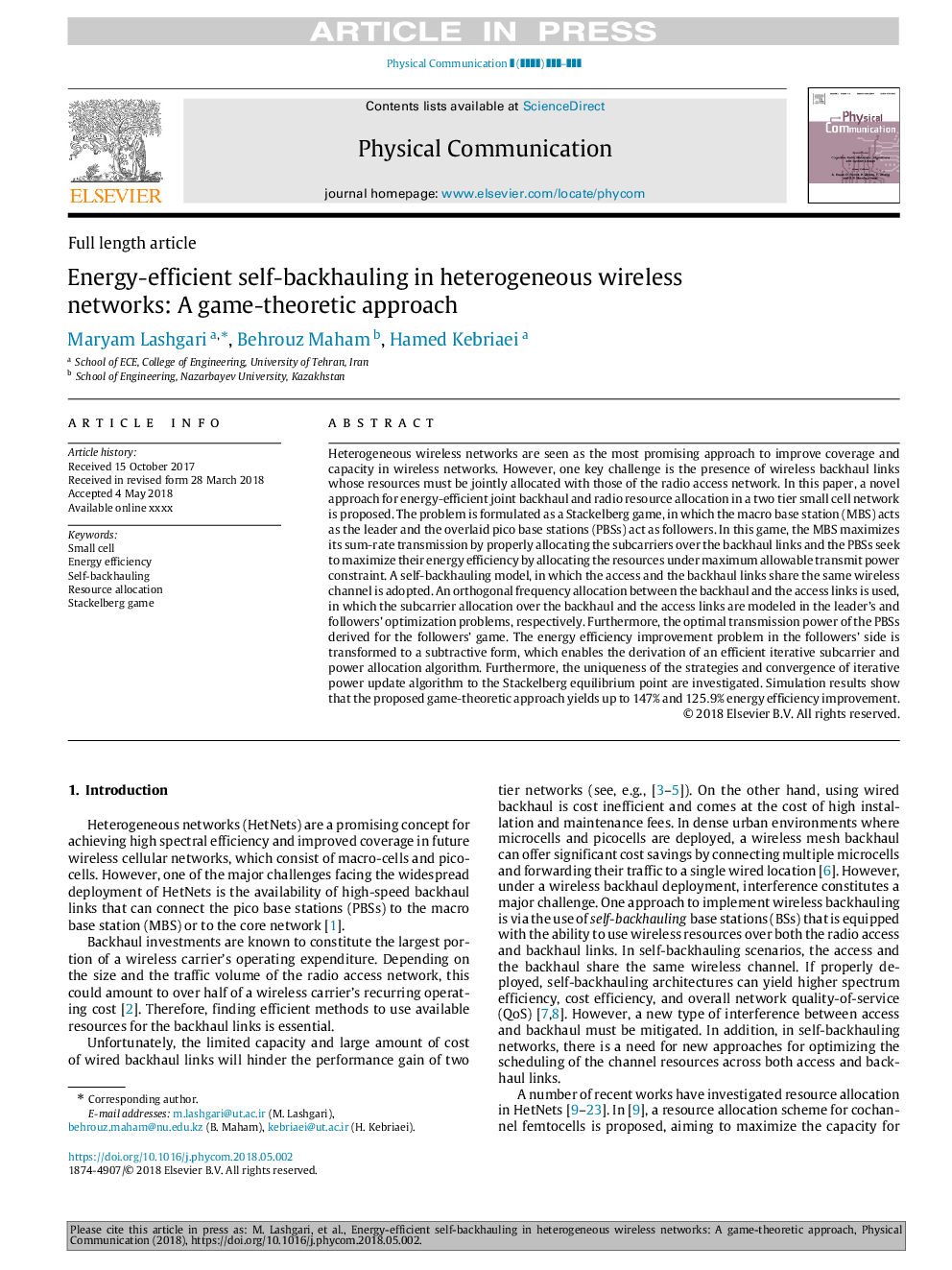| Article ID | Journal | Published Year | Pages | File Type |
|---|---|---|---|---|
| 6888997 | Physical Communication | 2018 | 11 Pages |
Abstract
Heterogeneous wireless networks are seen as the most promising approach to improve coverage and capacity in wireless networks. However, one key challenge is the presence of wireless backhaul links whose resources must be jointly allocated with those of the radio access network. In this paper, a novel approach for energy-efficient joint backhaul and radio resource allocation in a two tier small cell network is proposed. The problem is formulated as a Stackelberg game, in which the macro base station (MBS) acts as the leader and the overlaid pico base stations (PBSs) act as followers. In this game, the MBS maximizes its sum-rate transmission by properly allocating the subcarriers over the backhaul links and the PBSs seek to maximize their energy efficiency by allocating the resources under maximum allowable transmit power constraint. A self-backhauling model, in which the access and the backhaul links share the same wireless channel is adopted. An orthogonal frequency allocation between the backhaul and the access links is used, in which the subcarrier allocation over the backhaul and the access links are modeled in the leader's and followers' optimization problems, respectively. Furthermore, the optimal transmission power of the PBSs derived for the followers' game. The energy efficiency improvement problem in the followers' side is transformed to a subtractive form, which enables the derivation of an efficient iterative subcarrier and power allocation algorithm. Furthermore, the uniqueness of the strategies and convergence of iterative power update algorithm to the Stackelberg equilibrium point are investigated. Simulation results show that the proposed game-theoretic approach yields up to 147% and 125.9% energy efficiency improvement.
Related Topics
Physical Sciences and Engineering
Computer Science
Computer Networks and Communications
Authors
Maryam Lashgari, Behrouz Maham, Hamed Kebriaei,
